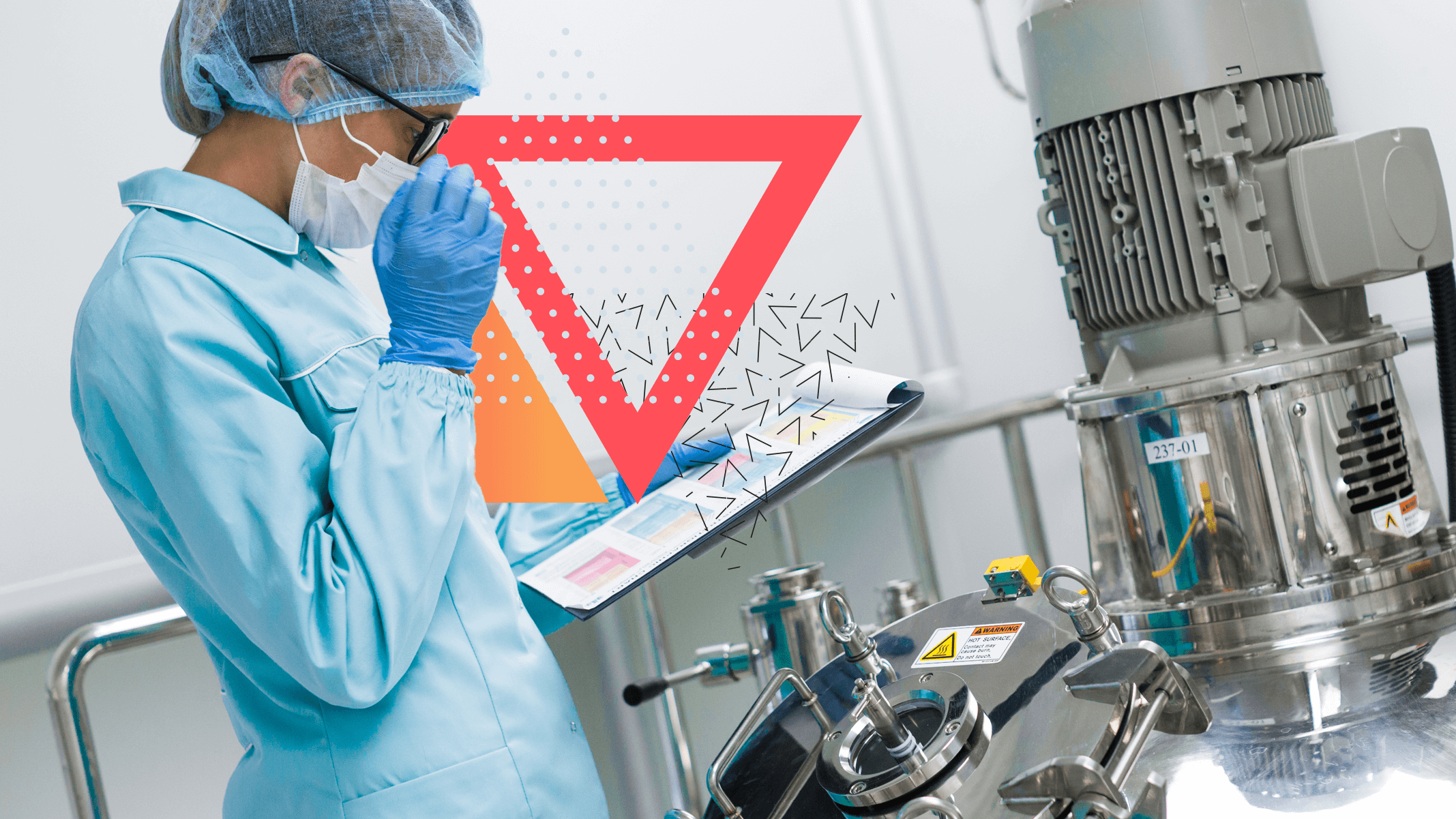Bioprocessing, which utilizes living cells to produce desired compounds, underpins the large-scale production of a diverse range of products, including food ingredients, agricultural products, cosmetics, and, most crucially, biotherapeutics. This technology leverages a cell’s metabolic capabilities and enzymatic machinery, and optimizing these processes is essential for consistent and high-quality production. Central to this optimization is the manipulation of the metabolism of cells in culture. By precisely controlling how these cells function, researchers can ensure efficient production of target molecules with consistent quality, while minimizing waste products and maximizing final yields.
Optimization must also be performed with consideration of meticulous control across multiple processes that are required to achieve consistent quality and regulatory compliance. This includes monitoring the culture environment itself, such as nutrient availability, pH, temperature, and dissolved oxygen levels. Additionally, cell growth and viability must be closely tracked, along with the production of the target molecule and any unwanted byproducts. This level of understanding and control over the bioprocess lifecycle ensures efficient, cost-effective processes that reduce time-to-market and overall program expense.
Why metabolism matters in bioprocessing
One of the biggest challenges bioprocess engineers face is knowing how far their cultures can be pushed toward maximum metabolic performance and protein production without generating critical stress responses that limit productivity. This is oftentimes the most relevant area where metabolomics analyses can help, but there are several additional application areas for metabolomics that can address a variety of challenges and comprehensively improve process monitoring and production.
By interrogating amino acid, lipid, nucleotide, carbohydrate, and vitamin/co-factor metabolic pathways, and their interconnectivity, insights into redox balance, mitochondrial efficiency, antioxidant capacity, energetics, endoplasmic reticulum stress, lipid metabolism, and glycosylation can be gleaned. This information is useful for not only optimizing metabolic output while minimizing stress, but it can also provide a wealth of information around media/culture conditions, potential contamination, process efficiency, and much more.
Areas along the bioprocessing workflow that can benefit from the integration of metabolomics include1-6:
- Process development: culture method selection (i.e., batch, fed-batch, perfusion), scale-up, tech transfer
- Process optimization: media optimization, root-cause analysis, increase production, reduce variability, resolve process gaps
- Process characterization: clone/cell-line selection, strain engineering, raw material profiling, batch/process fingerprinting
- Process monitoring: interventional strategy development, performance/quality prediction
More metabolites = more insights
Several studies have elegantly demonstrated how metabolomics can support biologic manufacturing (e.g., monoclonal antibodies)1,7–8, beverage fermentation (e.g., beer, wine)9,10, biochemical production (e.g., biofuels)5,11, gene therapy vectors (e.g., CAR-T vectors), vaccine development12, and therapeutic stem cell expansion13. Applying metabolomics analyses to bioprocessing optimization and process control provides a clearer and more comprehensive picture beyond what traditional in-house methodologies contribute, which is typically only a cursory overview of a handful of metabolites useful for media characterization and optimization and is no longer sufficient to meet bioprocessing demands.
Global, untargeted metabolomic profiling can help achieve what current routine practices cannot (i.e., one-factor-at-a-time trial and error, design of experiments, etc.): a complete understanding of the underlying causes of metabolic bottlenecks and the intrinsic connections between the physiological requirements of cells and achieving peak performance.
For example, simply adding more of a depleted amino acid to the media may not lead to the expected improvements in culture performance if that amino acid is being catabolized through alternative pathways rather than being utilized efficiently for proliferation, protein production, or energy assimilation. Likewise, a buildup of amino acid byproducts, which can cause media acidification or altered redox status, can occur when amino acid supply exceeds the demand to support cellular processes like growth and protein synthesis. Thus, a more comprehensive metabolite interrogation of not only the parental amino acids but also their downstream metabolites paints a clearer picture of what is actually happening inside the bioreactor, facilitating more informed decision making.
The next level: multiomics
Leveraging a multiomics approach has the added benefit of enabling researchers to identify solutions beyond simple observational data, evolving their insight to include confident system awareness and actionable strategies14,15. Systems biology computational models that integrate data streams from multiple omics can help to decipher the interconnectivity between cellular genetics, process parameters, and environmental factors (i.e., media/feed components). Such efforts can also involve metabolic network model development using machine learning approaches16,17.
For example, a recent multiomics effort performed by Biogen, Inc. elucidated the importance of cysteine feed concentration in maintaining cellular viability, preserving redox balance, mitigating ER stress, and supporting mitochondrial homeostasis7,18. By employing metabolomics, transcriptomics, and proteomics, the researchers were able to expand their understanding of the cellular system, identify bioprocess monitoring biomarkers, and reveal new targets for genetic engineering approaches. These efforts allowed for improvements in cell growth, viability, titer, specific productivity, and mAb glycosylation.
In another example, metabolomics, proteomics, and fermentation kinetics data were employed to help guide metabolic engineering strategies in a Clostridium cellulovorans culture for the production of butanol as an alternative fuel5. Mathematical modeling based on the omics findings enabled researchers to pinpoint the limiting steps in butanol biosynthesis. Using this information, they engineered C. cellulovorans mutants with high-performance phenotypes capable of significantly increasing butanol production.
Employing metabolomics solutions with Metabolon
Metabolon’s untargeted biochemical profiling capabilities, a product of over 20 years of innovation in the areas of analytical chemistry, bioinformatics, and expert biochemical interpretation, supports accurate, thorough assessments of the influence of process variables on bioprocess management. Metabolon’s Global Discovery Panel employs UHPLC-MS/MS technology capable of identifying hundreds of distinct, fully annotated compounds from both the spent media and individual cells, providing a broad, extensive, accurate, and informative assessment of the complete biochemical space of your bioprocess cultures. This enables an expansion of optimization strategies beyond conventional technologies, driving predictability, increasing control, and improving performance.
Conclusions
Metabolomics has emerged as a powerful tool for bioprocess monitoring and optimization. By providing a real-time snapshot of cellular metabolism, bioprocess engineers can achieve more robust and reproducible processes. However, the true power lies in its synergy with other omics approaches. When combined with genomics, transcriptomics, and proteomics, metabolomics paints a comprehensive picture of cellular activity. This multiomics approach provides an unprecedented level of understanding, enabling researchers to fine-tune bioprocesses with unmatched precision. With tighter control over cellular activity, manufacturers can ensure consistent product quality, reduce production time, and ultimately, bring essential products to market faster. As metabolomics and multiomics approaches continue to evolve, their role in bioprocessing will undoubtedly become even more crucial, paving the way for a future of efficient, sustainable, and high-quality production.
If you want to get ahead of the game and gain a market advantage, consider adding metabolomics analyses to your bioprocess optimization and monitoring workflows. With our decades of experience and unmatched metabolite libraries with level 1 metabolite identification, Metabolon can help you gain the insight you need to level up your bioprocessing workflows.
References
- Kuwae S, Miyawaka I, and Doi T. Development of a chemically defined platform fed-batch culture media for monoclonal antibody-producing CHO cell lines with optimized choline content. Cytotechnology. 2018;70(3):939-948. doi: 10.1007/s10616-017-0185-1
- Gao Y, Ray S, Dai S, et al. Combined metabolomics and proteomics reveals hypoxia as a cause of lower productivity on scale-up to a 5000-liter CHO bioprocess. Biotechnol J. 2016;11(9):1190-200. doi: 10.1002/biot.201600030
- Vodopivec M, Lah L, Narat M, et al. Metabolomic profiling of CHO fed-batch growth phases at 10, 100, and 1,000 L. Biotechnol Bioeng. 2019 Oct;116(10):2720-2729. doi: 10.1002/bit.27087
- Ma N, Ellet J, Okediadi C, et al. A single nutrient feed supports both chemically defined NS0 and CHO fed-batch processes: Improved productivity and lactate metabolism. Biotechnol Prog. 2009;25(5):1353-63. doi: 10.1002/btpr.238
- Ou J, Bao T, Ernst P, et al. Intracellular metabolism analysis of Clostridium cellulovorans via modeling integrating proteomics, metabolomics and fermentation. Process Biochem. 2020;89:9-19. doi: 10.1016/j.procbio.2019.10.032
- Mullan B, Dravis B, Lim A, et al. Disulphide bond reduction of a therapeutic monoclonal antibody during cell culture manufacturing operations. BMC Proc. 2011;5 Suppl 8(Suppl 8):P110. doi: 10.1186/1753-6561-5-S8-P110
- Ali AS, Raju R, Kshirsagar R, et al. Multi-Omics Study on the Impact of Cysteine Feed Level on Cell Viability and mAb Production in a CHO Bioprocess. Biotechnol J. 2019;14(4):e1800352. doi: 10.1002/biot.201800352
- Kamachi Y and Omasa T. Development of hyper osmotic resistant CHO host cells for enhanced antibody production. J Biosci Bioeng. 2018;125(4):470-478. doi: 10.1016/j.jbiosc.2017.11.002
- Lopez-Malo M, Querol A, and Guillamon JM. Metabolomic comparison of Saccharomyces cerevisiae and the cryotolerant species S. bayanus var. uvarum and S. kudriavzevii during wine fermentation at low temperature. PLoS One. 2013;8(3):e60135. doi: 10.1371/journal.pone.0060135.
- Richter CL, Kennedy AD, Guo L, et al. Metabolomic Measurements at Three Time Points of a Chardonnay Wine Fermentation with Saccharomyces cerevisiae. Am J Enol Vitic. 2015;66:294-301. doi: 10.5344/ajev.2015.14062
- Chen H, Zheng Y, Zhan J, et al. Comparative metabolic profiling of the lipid-producing green microalga Chlorella reveals that nitrogen and carbon metabolic pathways contribute to lipid metabolism. Biotechnol Biofuels. 2017;15:10.153. doi: 10.1186/s13068-017-0839-4.
- Lin J, Yi X, and Zhuang Y. Coupling metabolomics analysis and DOE optimization strategy towards enhanced IBDV production by chicken embryo fibroblast DF-1 cell. J Biotechnol. 2020;307:114-124. doi: 10.1016/j.jbiotec.2019.10.018.
- Fujisawa K, Takami T, Okada S, et al. Analysis of Metabolomic Changes in Mesenchymal Stem Cells on Treatment with Desferrioxamine as a Hypoxia Mimetic Compared with Hypoxic Conditions. Stem Cells. 2018;36(8):1226-1236. doi: 10.1002/ste,.2826
- Masson HO, la Cour Karottki KJ, Tat J, et al. From observational to actionable: rethinking omics in biologics production. Trends Biotechnol. 2023;41(9):1127-1138. doi: 10.1016/j.tibtech.2023.03.009.
- Wan S, Liu X, Sun W, et al. Current advances for omics-guided process optimization of microbial manufacturing. Bioresour Bioprocess. 2023;10(1):30. doi: 10.1186/s40643-023-00647-2.
- Schinn SM, Morrison C, Wei W, et al. A genome-scale metabolic network model and machine learning predict amino acid concentrations in Chinese Hamster Ovary cell cultures. Biotechnol Bioeng. 2021;118(5):2118-2123. doi: 10.1002/bit.27714
- Schinn SM, Morrison C, Wei W, et al. Systematic evaluation of parameters for genome-scale metabolic models of cultured mammalian cells. Metab Eng. 2021;66:21-30. doi: 10.1016/j.ymben.2021.03.013
- Ali AS, Chen R, Raju R, et al. Multi-Omics Reveals Impact of Cysteine Feed Concentration and Resulting Redox Imbalance on Cellular Energy Metabolism and Specific Productivity in CHO Cell Bioprocessing. Biotechnol J. 2020;15(8):e1900565. doi: 10.1002/biot.201900565


